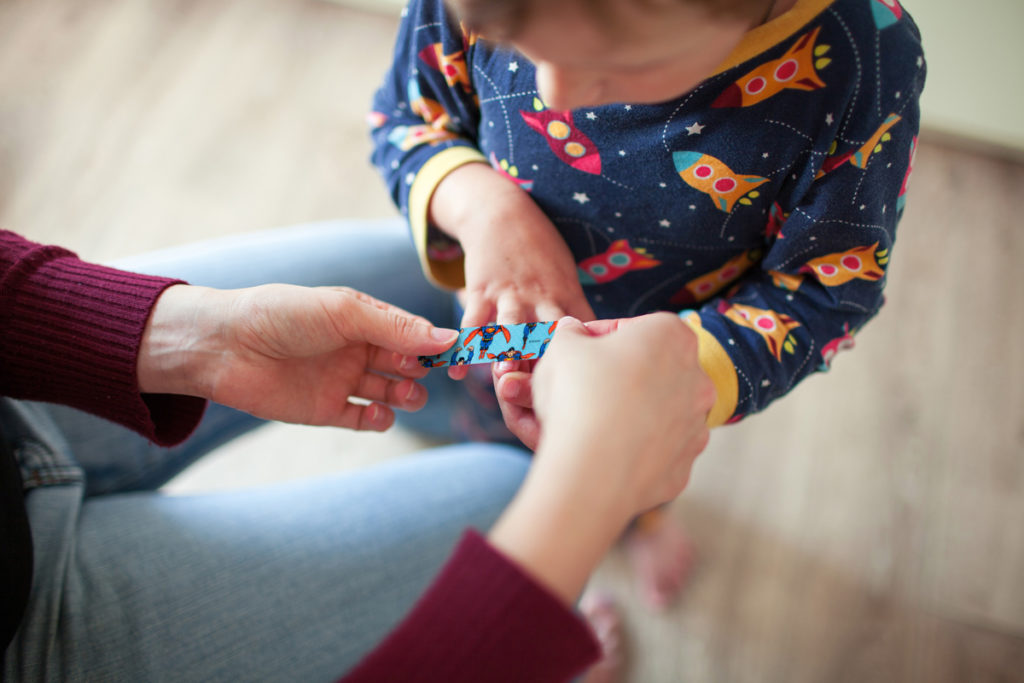Children’s lives have been turned upside down by the pandemic. Between remote schooling, wearing masks, canceled playdates and birthday parties, and our regular routines looking anything but routine – it’s essential to realize that the effects of the past two years aren’t over.
And, as our lives increasingly return to normal, much remains unknown about the toll the COVID-19 pandemic has taken on everyone – especially children.

While some may say their children thrived through the pandemic, enjoying more time at home and the benefits of added screen time through virtual lessons, others suffered from the lack of academic, social, and emotional support, especially when viewed through a socio-economic lens.
Seeing a 20-30% spike in emergency mental health visits, experts recognize children and adolescents are showing signs of stress from trauma experienced during the pandemic. And as masks come off and summer camps open back up – it’s essential to learn how we can support our younger population during a shift that may often feel overwhelming.
It’s important to remember that while we endured the pandemic, our children grew up in it, and the transition back to normal may take more time.
Many children have become used to having their parents or caregiver by their side at all hours of the day. For some infants, it’s all they’ve known. And as we supported our children through those early days of uncertainty in 2020, we must have the same level of care today.
Plan ahead, but allow for flexibility
Planning ahead gives children a sense of safety and security. While making plans for some much-needed family fun, include your children in the discussion to help lessen anxiety.
Take it step-by-step
Big changes can often result in big feelings. Emphasize that reopening is a gradual process. Take it one step at a time, recognizing your child’s comfort level in each new setting.
Validate fears
When faced with an anxious child, let them know you recognize their feelings and take steps to help them manage them. Taking the time to answer any questions they have will allow you to correct any misinformation and help them overcome any fears or uncertainties.
Be alert to signs of something more serious
Mood changes, sleep changes, or avoiding activities may signify your child is having trouble adjusting to the quickly changing landscape. Take time to talk and reach out for services if they need more support.
Overcome vaccine anxiety
When recognizing post-pandemic anxiety in children, we should also recognize vaccine-associated anxiety. At least two-thirds of children and one-fourth of adults have a fear of needles, and when heading to an appointment for a COVID-19 vaccination, that fear can often result in a tearful meltdown.



With everyone over the age of 5 approved by the CDC for a COVID-19 vaccine, both healthcare providers and parents can help reduce patient anxiety in children. Parents and guardians can provide comfort by holding their child, bringing a stuffed animal, creating a distraction, and helping their child take deep breaths. Clinicians can help reduce anxiety by providing children with a positive patient experience. This includes redirecting the child’s attention, familiarizing children with the tools and equipment they’ll be using, and including child-friendly themes and distractions.
Dukal’s line of licensed bandages offers patients fun characters and designs while offering practitioners our trusted Stat Strip® technology. By replacing traditional adhesive bandages, character bandages improve patient experience, reducing anxiety and allow children to wear their vaccine with pride.
Dukal realizes the collective role we all play in helping our children as their world reopens, and it is our hope our pediatric line of medical disposables can bring added comfort and care.